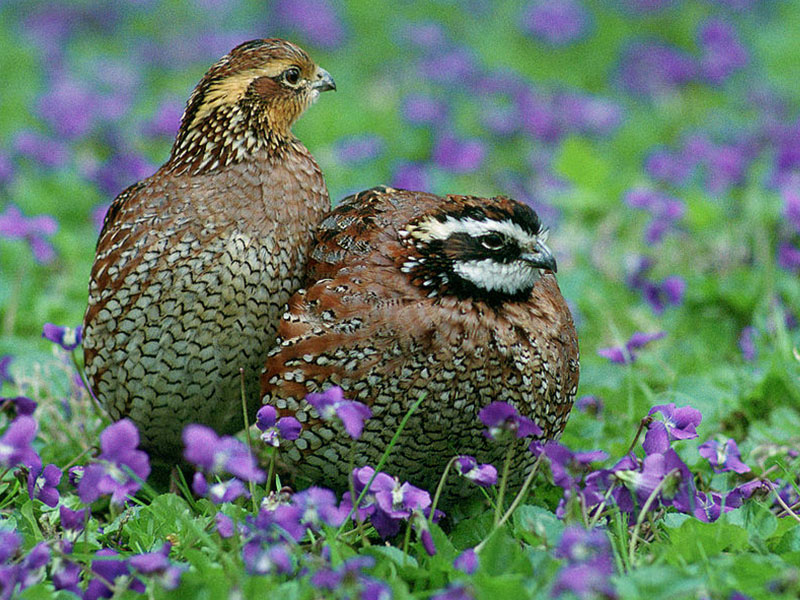The bob whites are distinctly birds of the farm and are fond of grain fields, and any farm where grain is raised may be made a game preserve. The birds thrive in civilization and will nest very near a house provided it does not contain enemies. A covey or two may be induced to nest in the kitchen garden or in an angle of its fence, and since these birds are very prolific, every likely field, including potato fields and some pastures, can be made to yield one or more covers.
The potato fields are especially attractive to bob whites, and the bob birds have recently been found to be a great benefit to the crop since they devour with avidity the Colorado potato beetle (known everywhere as potato bug), which, since its migration eastward, has threatened the potato crop. One reader commented “Quail have built their nests around my fence and even in my garden, within fifty feet of my house. They have kept my potato patch entirely free from the Colorado potato bug. In the South bob-white also destroys the dreaded boll- weevil in the cotton fields.

In order to have the birds abundant, it is necessary to make the place attractive or leave it attractive if its natural advantages have not been destroyed. The bob whites despise bare ground and are not fond of closely- cultivated fields^ where their natural hiding places, the brush heaps, briar patches, weeds, and grasses, have been cleared away, and where the barbed-wire has replaced the old rail fence with its sheltering angles overgrown with weeds and bushes, especially the sumac, which furnish food as well as shelter. A cover is almost as essential to the happiness and well-being of bob-white as food and water are.
A wire fence with no cover beneath it may be made attractive by placing brush along its entire length and by permitting a strip of grass, briars, and weeds to grow on either side. An occasional stump -and brush heap in a field may not seem attractive to the modern farmer, but when he becomes a game-preserver he will know that the birds sheltered by such covers are worth far more than anything he could raise on a few feet of the ground.

The bob-whites are terrestrial birds and feed, nest and roost in the fields. When alarmed it is their habit to fly at once to the woods, and it is, therefore, desirable that the preserve contains woodland. Since they seldom fly far in the woods and are never found in the center of large forests, the woods reserved for the birds may be small—a few acres or less in extent. The ordinary woodlots on every farm and even small thickets are sufficient. Where the woods are large I would advise cutting them up into small tracts (unless ruffed grouse or turkeys are to be preserved), making fields between the smaller woods, and here I may observe that the fields also may be small, since these birds do not require large fields and the number of covies may be increased when new fields are added.
Since the shooting is better on the wheat stubbles, what should be the principal crop of the game preserve; but corn is an excellent winter food for the birds, and a farm where both grains are cultivated is the best. The birds were once abundant on the corn lands of Indiana, Illinois, and Kansas, and there can be no doubt that farms where corn only is raised may be heavily stocked with birds.
The quail is one of the most popular game birds in the United States and has a wide distribution.
“Bob White” is a true game bird and deserves all the good things that are said of him.
While the prairie chicken retreats before the advance of civilization and the settling up of a country, the quail does not and will thrive sometimes better in an older settled district if there is a reasonable amount of cover and the winters are not too severe.
“Bob White” is an optimistic bird and his cheerful whistle is enjoyed alike by the farmer and the sportsman as lie sits on a fence post or at the edge of an orchard.
If you have a well-broken dog it greatly adds to your pleasure in quail hunting.
The quail feed in the morning and generally retires during the middle of the forenoon to the heaviest cover in the neighborhood.
It is surprising how a quail will stick to a little bit of cover after the bevy has been scattered. When flushed in the timber they will sometimes take to the trees, hiding among the branches, or sticking so close to the trunk of an old oak tree that they resemble a knot.
